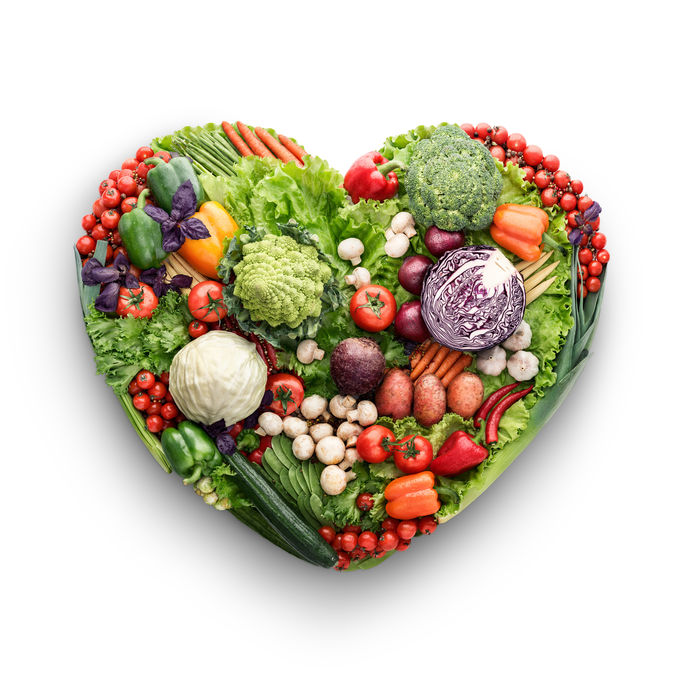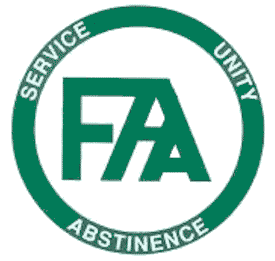FAA Food Plan

We offer this food plan as a guide to suffering food addicts. It is not meant as a diet, but a lifestyle change in our eating habits. Those of us who have experienced recovery through this program know that this plan only works with the support of our membership and by following the FAA Steps to Recovery. You are not alone. Please seek us out and learn about our fellowship.
FAA Food Plan Guide
FAA Food Plan Guide
Breakfast
1 Protein
1 Dairy
1 Fruit
1 Grain or Starchy Vegetable
Lunch
4 hours after breakfast
1 Protein
1 Cooked Vegetable
1 Fresh Vegetable
1/2 Daily Oil
Men: Add 1 fruit or 1 grain or 1 starchy vegetable
Dinner
5 hours after lunch
1 Protein
1 Cooked Vegetable
1 Fresh Vegetable
1 Grain or Starchy Vegetable
1/2 Daily Oil
Metabolic Adjustment (MA)
4 hours after dinner
1 Dairy OR 2 oz. Protein
1 Fruit
Names of Sugar
Ace K (Acesulfame-k (Sunette, Sweet and Safe, Sweet One)
Agave
Alcohol Sugars (“ol” endings, i.e., sorbitol, mannitol, etc.)
Amazake
Apple Sugar
Artificial Sweetener Packets
Artificial Flavors (call the company about the product contents)
Aspartame/NutraSweet
Aguamiel
Barbados Sugar
Bark Sugar (also called Xylose)
Barley Malt
Barley Syrup
Beet Sugar
Black Strap Molasses
Brown Rice Syrup
Brown Sugar
Brown Sugar Syrup
Cane Juice
Cane Sugar
Caramel Coloring
Caramelized Sugar
Carob Chips/Powder
Cocoa
Concentrated Fruit Juice
Corn Sweetener
Dark Brown Sugar
Date Sugar
Dextrin
Dextrose
Diglycerides
Disaccharides
Dried/Dehydrated Fruit (i.e. figs, raisins, apple chips, etc.)
Evaporated Cane Juice
Extracts (any type or flavor)
Fat substitutes (made from concentrated fruit paste)
Florida Crystals (evaporated cane juice)
Fructooligosaccharides (FOS)
Fructose
Fruit Flavorings (call the company about the product contents)
Fruit Juice (call the company for added or hidden sugar)
Fruit Juice Concentrate
Galactose (Gal)
Glucitol (Sorbitol or Hexitol)
Glucosamine
Glucose
Glucose Polymers
Glucose Syrup
Glycerides
Glycerine (Glycerol)
Glycine
Glycol
High Fructose Corn Syrup
Honey (any type or form)
Inulin
Isomalt
-ides, any additive with this suffix:
Monosodium glycerides (any), olyglycerides, saccharides (any), trisaccharides, diglycerides, disaccharides, monoglycerides, monosaccharides, etc.
Jaggery
Lactose
Levulose
Licorice root powder
Light Brown Sugar
“Light” Sugar
“Lite Sugar”
“Low Sugar”
Malted Barley
Maltitol
Maltodextrin
Maltodextrose
Maltose
Malts (any)
Mannitol
Mannose
Maple Sugar
Maple Syrup
Microcrystalline Cellulose
Milled Sugar
Modified Food Starch
Molasses
Monoglycerides
Monosaccharides
Monosodium Glycerides
“Natural” Flavors (call the company for product contents)
Natural Milled Cane Sugar
“Natural” Sugar (call the company for product contents)
“Natural” Sweeteners
“Naturally” Sweetened
Nectar(s)
Neotame (Newtame)
-ol, any additive with this suffix:
Carbitol, glucitol, glycerol, glycol, hexitol, inversol, malitol, mannitol, sorbitol, xylitol, etc.
Olestra (made from sucrose)
“OSE” (any, i.e. sucrose, dextrose, fructose, etc.)
Papain
Pectin
Pentose
Polydextrose
Polyglycerides (Also known as Oleic, Linoleic, and Linolenic)
Polytose
Powdered Sugar
Raisin Juice
Raisin Paste
Raisin Syrup
Raw Sugar
Ribose
Rice Malt
Rice Sugar
Rice Syrup (Yinnie Syrup)
Rice Syrup Solids
Saccharides (any)
Sorbitol (Hexitol, Glucitol)
Sorghum (Sorghum syrup, Sorghum Molasses)
Stevia
Sucanat (evaporated cane juice)
Sucralose
Sucrose
Sugarcane
Sugar Cubes
“Sugar Free” Products
Syrups (any)
Salt (read the label for added dextrose)
Table Sugar
Tagatose (D-tagatose)
Trehalose
Trisaccharide
Turbinado Sugar
Unrefined Sugar
Vanillin/Vanilla
Whey
White Sugar
Xanthan Gum
Xylitol
Xylose
NOTE: ALL artificial sweeteners are consider sugar in FAA.
Protein
NOTE: Men eat 5 oz. of red meat and 6 oz. of fish or poultry.
4 oz. beef
4 oz. chicken
1 cup dried beans (cooked)
2 eggs (medium)
4 oz. fish
4 oz. hot dogs (not sugar cured)
4 oz. lamb
4 oz. pork
4 oz. shellfish
4 oz. turkey
4 oz. veal
6 oz. vegetarian (tofu, tempeh)
Vegetables
1 cup of any of the following:
artichoke
asparagus
bamboo shoots
beans (yellow or green)
bok choy
beets
broccoli
brussel sprouts
cabbage
carrots
cauliflower
celery
chicory
chinese cabbage
cucumber
dill pickles
eggplant
endive
escarole
greens *
mushroom
okra
onions
peppers
pimentos
radishes
rhubarb
romaine
rutabaga
sauerkraut
snow pea pods
spinach
summer squash
swiss chard
tomatoes
turnips
vegetable juice
water cress
*beet, collard, danelion, kale, all types of lettuce, mustard, any sprouts (no wheat grass)
NOTE: Tomato juice or vegetable cocktail juice without sugar may be used as a cooked vegetable substitute. 1 cup juice =1 cup cooked vegetables.
Condiments
Any spice or sauce that is sugar-free, alcohol-free or wheat-free including, but not limited to, mustard, tamari, salsa, non-fat yogurt, lemon juice, etc. Limit spice and condiment use to the levels recommended in recipes or no more than 1 teaspoon per day of any one spice and no more than two tablespoons per day of any one sauce.
Dairy
Dairy may also be used as a protein
1 cup buttermilk
½ cup low-fat or non-fat ricotta cheese
1 cup milk (skim or 1% )
½ cup low fat cottage cheese
1 cup low or non-fat yogurt
1 cup unsweetened soy beverage
NOTE: If you are dairy sensitive, eliminate dairy and substitute 2 oz. of any type of protein.
Fats
Polyunsaturated oils are essential to good health. The fat requirement is normally divided between two or more meals.
Women require one fat serving per day and men require two.
Choose from the following:
oil → 1 tablespoon
margarine → 1 tablespoon
mayonnaise → 1 tablespoon
salad dressing → 2 tablespoons
Fruits
1 medium apple
½ cup apple juice
½ cup applesauce
3 medium apricots
1 cup berries
1 cup citrus juice
½ cantaloupe (6″ dia)
1 cup cherries
1 cup cranberry juice
1 cup fruit cocktail
½ large grapefruit
1 cup grapes
¼ honeydew (7″ dia.)
3 small Kiwi
2 small OR 1 large lemons/limes
2 small OR 1 large nectarines
1 large orange
1 large peach
1 large pear
1 cup pineapple
½ cup pineapple juice
3 medium plums
½ cup prune juice
2 small tangerines
1 cup watermelon
Grains
1 cup of any of the following, measured after cooking:
amaranth
barley
brown rice
buckwheat (kasha is toast)
cream of rye
grits
millet
oat bran (1/2 c. raw = 1 cup cooked)
oatmeal
quinoa
rye
1 cup of any non-wheat, sugar-free, dry cereal such as:
puffed brown rice
puffed corn
puffed millet
3 rice cakes = 1 serving
Starchy Vegetables
1 small baked potato (6 oz./white)
½ cup cooked beans (lima, navy, all dried beans)
1 medium corn
½ cup cooked corn (kernel)
½ cup mashed potatoes (white)
½ cup mashed yams
½ cup parsnips
½ cup peas, dried
½ cup peas, green
½ cup pumpkin
1 small sweet potato (6 oz.)
½ cup squash*
*acorn, butternut, hubbard, winter and spaghetti squash
Beverages
Suggested drinks are water, carbonated water, herbal tea, decaffeinated coffee or decaffeinated tea.
Clear soup (without sugar) is permitted before lunch or dinner.
Tomato juice or vegetable cocktail juice without sugar may be used as a cooked vegetable substitute.
1 cup juice = 1 cup cooked vegetables.
PLEASE NOTE:
All diet sodas have artificial sweeteners, which are now known to create cravings similar to sugar.
Names of Flour & Wheat
Types & Forms of Flour:
Agar
Almond flour
Amaranth flour
Arrowroot
Baking flour
Baking powder
Barley flour
Bean flour
Blue corn flour
Buckwheat flour
Chestnut flour
Chia seeds
Chickpea/Garbanzo bean/
Bean flour
Coconut flour
Corn flour
Corn meal
Corn starch
Cottonseed flour
Cream of Tartar
Emmer flour
Enriched bleached flour
Enriched wheat flour
Gelatin
Hemp flour
Kuzu root
Lupin flour
Malted barley flour
Millet flour
Multi-grain flour
Nut flour (any type of nut)
Oat flour
Pastry flour
Pea flour
Potato flour
Potato starch
Psyllium husk powder
Quinoa flour
Rice flour
Rye flour
Sago flour
Soy flour
Sorghum flour
Spelt flour
Spinach flour
Tapioca flour
Teff flour
Triticale flour
Wheat flour
White flour
Yam flour
*Any bean, vegetable, or grain that is ground into flour, meal, or powder is “flour,” as the term is used in the FAA definition of abstinence. Starches and guar gum are also considered flour.
Types & Forms of Wheat:
Bran (if made from wheat)
Bulgur
Cracked wheat
Durum wheat
Einkorn
Emmer wheat
Farro
Gluten (wheat protein)
Hard wheat
Kamut/Khorasan
Red wheat
Red spring wheat
Seitan (made from wheat protein, gluten)
Semolina
Soft Wheat
Spelt
Sprouted Wheat
Triticale (a wheat/rye hybrid)
Wheat berries
Wheat bran
Wheat flakes
Wheat germ
Whole-grain wheat
Winter wheat
PLEASE NOTE:
These lists are not exhaustive. If you are unsure about an ingredient, it is best to check with the manufacturer or forego the product.
** The FAA Basic Food Plan is a guide with specific foods listed. REMEMBER: NO sugar, flour or wheat. **
The daily requirement for oil is one serving for women and two servings for men, to be divided among two or three meals.
NOTE: Men need to add two ounces of fish or poultry or one ounce of red meat at each meal to the amounts shown on the list. At lunch, men also add a serving of one of the following: a fruit, a grain, or a starchy vegetable.
This food plan is designed for adults. For children who need to address food addiction, we recommend that your pediatrician evaluate this food plan to determine your child’s needs.
Clear soup is permitted before lunch OR dinner.
Because of our carbohydrate sensitivity, we totally eliminate all artificial sweeteners, including “sugar-free” sodas.
This initial food plan has been the most successful for our members to obtain abstinence, enabling them to begin to have clear thinking. Eating the prescribed food plan also offers us a chance to heal our organs and learn the basic fundamentals of healthy eating. To maintain abstinence, an open mind will be required while our bodies heal and our needs change. The most important aspect of maintaining abstinence is to totally eliminate sugar, flour and wheat from our daily lives.
The food plan is a way of eating that is free from eating sugar, flour and wheat. The food plan eliminates the basic components of our binge foods: sugar, flour, wheat and inordinate amounts of fat (sticky, greasy, pasty foods). This is not a reducing diet because it is not severely restricted in terms of basic food groups. However, it does reduce fat intake to an appropriate level.
Most food addicts do achieve and maintain a healthy weight by following this plan. Nonetheless, we would like to address the question of what to do when a person following the food plan continues to lose weight after reaching a healthy weight or when a person who is underweight when they begin the program fails to gain. This guide is intended to focus on recovery for food addicts as a whole rather than to address specific situations that arise in recovery. Although unusual, if weight loss or failure to gain continues over time to an inappropriate level, any changes needed to stabilize one’s weight should be developed with the assistance of a sponsor, physician or other qualified professional. The most important thing is to maintain close contact with one’s sponsor and remain totally honest about what we are eating, how much we weigh, how our bodies are functioning, and how we are feeling physically.
